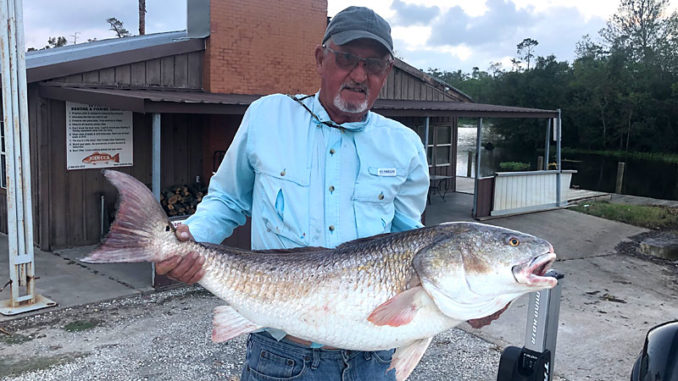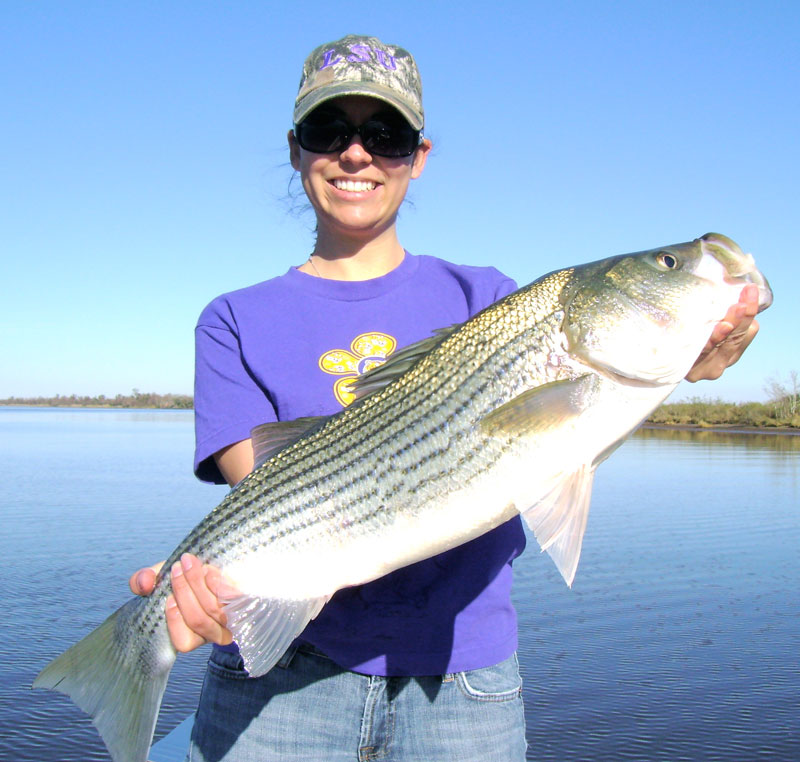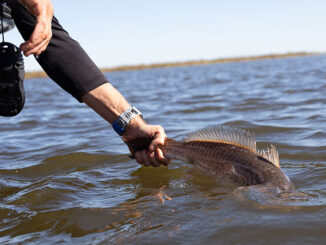
With so much of the focus during the winter on wading for trophy trout, chasing ducks or climbing up a tree for a shot at a deer, there are many opportunities that do not get much pressure.
Enter the dredge bite on the Sabine River. Few anglers take advantage of the easy and rather lazy way of getting bit; however, once figured out, it can be highly addicting.
When I refer to dredging as a means of fishing, I mean one of two things. There is the dredging that we do on the Causeway Reef, when we cast our lines in the opposite direction we are drifting and literally drag our lures across the bottom. We are not reeling at all, only keeping the line tight to stay in constant contact with the lure to be able to detect a bite. The other type I refer to in the river is very similar but requires us to reel. We cast upcurrent with a heavy enough jighead to get down to the bottom and then let the current bring it back towards the boat. We reel just enough to keep the slack out of the line and occasionally twitch the rod tip to skip the lure across the bottom. I will typically have the boat “anchored” with the trolling motor in the current, which necessitates the reeling.

This style of fishing works in areas with a strong-enough current. The key is to find current breaks where the fish are waiting to ambush their unsuspecting prey. Quality electronics and time on the water are necessary to perfect this technique, or you could hire a guide and gain a wealth of knowledge in a short time.
Cormorants
Cormorants can also be key to giving away some hotspots — or at least areas with bait. They are absolutely fish-eating machines. If they are there, then so is the bait. We use them to help locate schools of baitfish the same way we use gulls to locate schools of trout and redfish. Areas like Burton’s Ditch and the Dupont outfall are good places to start. Redfish gang up by the thousands in these areas when conditions are right. Strength of the current dictates the size jighead we throw; commonly, a 1/4- or 3/8-ounce chunk of lead will get the job done.
Targeting redfish, I do like to take advantage of their keen sense of smell in deeper water, so I will frequently rig up with GULP shrimp, especially if the water is off-colored. I like the new penny and natural color the most. We drag them across the bottom in 6 to 14 feet of water. If you hit them right you won’t need anything other than a jighead. It is absolutely incredible when you find them stacked up as thick as thieves, and this month is when it really gets started. Also, do not be surprised if you come across a striper in the mix. As the mercury continues to fall, our chances at catching stripers on the lower Sabine River go up exponentially. They are a welcome surprise when you’re catching redfish after redfish. It is an addicting bite that does not require much fuel, as there are many spots within a short run of the Orange public boat ramp on Simmons. With a little assistance from the cormorants and you’ll be catching fish in no time.
Capt. Adam Jaynes can be found at justfishsabine.com.


